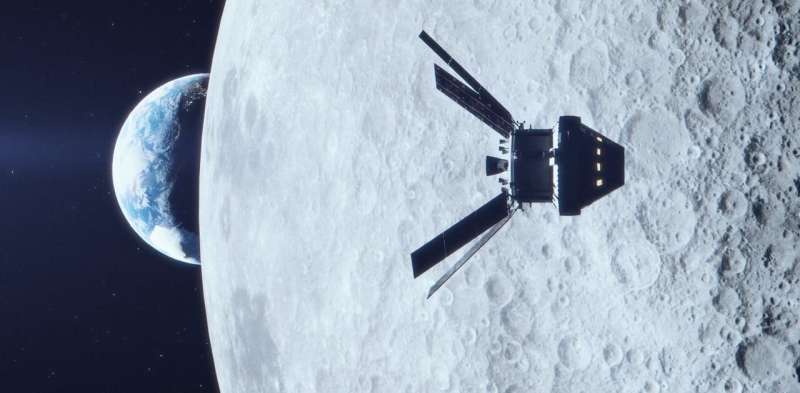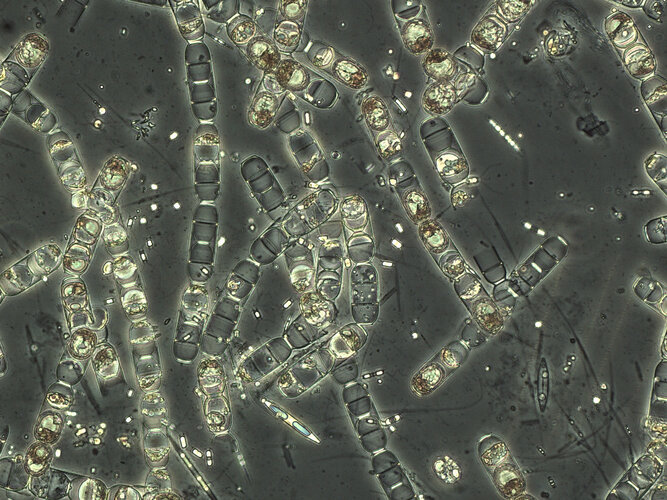Nations realize they need to take risks or lose the race to the moon
Tuesday, 18 June 2024 15:40

The NASA-led Artemis-3 mission will place the first human boots on the surface of the moon since Apollo 17's Gene Cernan and Harrison Schmitt left the lunar surface in December 1972.
The goal of the Artemis program is to establish a permanent human presence on Earth's natural satellite and an economy based around the moon. Artemis-3 is scheduled for no sooner than September 2026. However, further delays are likely and there are many technical challenges yet to overcome. Some might wonder whether it is going to happen at all.
I am convinced it will, because unlike the Apollo program, which would be unaffordable in today's climate, the current lunar endeavor will pay off in financial and exploration terms. Extracting water ice from craters at the lunar south pole could facilitate journeys from the moon to other destinations such as Mars, bringing down the cost of space exploration.
This is why the booming space industry seems fixed on the moon as a destination right now—countries simply cannot afford to miss this boat.
Can't stop won't stop: Solar Orbiter shows the Sun raging on
Tuesday, 18 June 2024 12:00
The hyperactive sunspot region responsible for the beautiful auroras earlier in May was still alive and kicking when it rotated away from Earth’s view. Watching from the other side of the Sun, the ESA-led Solar Orbiter mission detected this same region producing the largest solar flare of this solar cycle. By observing the Sun from all sides, ESA missions reveal how active sunspot regions evolve and persist, which will help improve space weather forecasting.
Ariane 6 launches Curium One: space for all
Tuesday, 18 June 2024 09:00
Europe’s newest rocket soon launches, taking with it many space missions each with a unique objective, destination and team at home, cheering them on. Whether into Earth orbit to look back and study Earth, peer out to deep space or test important new technologies, Ariane 6’s first flight will showcase the versatility and flexibility of this impressive, heavy-lift launcher. Read on for all about Curium One, then see who else is flying first.
LIST launches nanosatellite to demonstrate energy harvesting in space
Tuesday, 18 June 2024 03:45 The Luxembourg Institute of Science and Technology (LIST) has launched its CubeSat project, LIST-SAT-01, marking the first Luxembourgish nanosatellite initiative with an in-house scientific experiment. This project aims to test and advance technologies developed at LIST, increasing their Technology Readiness Level (TRL) and achieving flight heritage for on-board technologies.
At the core o
The Luxembourg Institute of Science and Technology (LIST) has launched its CubeSat project, LIST-SAT-01, marking the first Luxembourgish nanosatellite initiative with an in-house scientific experiment. This project aims to test and advance technologies developed at LIST, increasing their Technology Readiness Level (TRL) and achieving flight heritage for on-board technologies.
At the core o Rocket Lab Signs Largest Electron Launch Deal with Synspective
Tuesday, 18 June 2024 03:45 Rocket Lab USA, Inc. (Nasdaq: RKLB) announced a ten-launch agreement with Japanese Earth observation company Synspective. The deal, the largest in Rocket Lab's history for its Electron launch vehicle, was announced in Tokyo with Rocket Lab founder and CEO Sir Peter Beck, Synspective founder and CEO Dr. Motoyuki Arai, and New Zealand Prime Minister Christopher Luxon in attendance.
Rocket La
Rocket Lab USA, Inc. (Nasdaq: RKLB) announced a ten-launch agreement with Japanese Earth observation company Synspective. The deal, the largest in Rocket Lab's history for its Electron launch vehicle, was announced in Tokyo with Rocket Lab founder and CEO Sir Peter Beck, Synspective founder and CEO Dr. Motoyuki Arai, and New Zealand Prime Minister Christopher Luxon in attendance.
Rocket La China' conducts ignition test conducted on new rocket
Tuesday, 18 June 2024 03:45 Chinese rocket scientists and engineers conducted a critical test of a propulsion system for a new carrier rocket, essential for China's future manned moon landings.
"During the ignition test that took place at an engine testing facility in Beijing's Fengtai district, three YF-100K engines spewed fire for several minutes, generating a combined thrust of 382 metric tons, according to the Ch
Chinese rocket scientists and engineers conducted a critical test of a propulsion system for a new carrier rocket, essential for China's future manned moon landings.
"During the ignition test that took place at an engine testing facility in Beijing's Fengtai district, three YF-100K engines spewed fire for several minutes, generating a combined thrust of 382 metric tons, according to the Ch Kyocera Installs Fine Cordierite Ceramic Mirror on ISS for Optical Communications
Tuesday, 18 June 2024 03:45 Kyocera Corporation (President: Hideo Tanimoto, hereinafter: Kyocera) announced that its "Fine Cordierite" ceramic mirror has been chosen for use in experimental equipment to conduct optical communication between the International Space Station (ISS) and a mobile optical station on Earth. This is the first time*1 that cordierite has been adopted for such a purpose.
Kyocera's Fine Cordierit
Kyocera Corporation (President: Hideo Tanimoto, hereinafter: Kyocera) announced that its "Fine Cordierite" ceramic mirror has been chosen for use in experimental equipment to conduct optical communication between the International Space Station (ISS) and a mobile optical station on Earth. This is the first time*1 that cordierite has been adopted for such a purpose.
Kyocera's Fine Cordierit New Research Supports Modified Gravity Theory Over Dark Matter
Tuesday, 18 June 2024 03:45 Scientists at Case Western Reserve University have found new evidence that could change our understanding of the cosmos. Tobias Mistele, a post-doctoral scholar at the Department of Astronomy, used gravitational lensing to investigate dark matter. He discovered that the rotation curves of galaxies remain flat for millions of light years.
Previously, it was believed that these curves must d
Scientists at Case Western Reserve University have found new evidence that could change our understanding of the cosmos. Tobias Mistele, a post-doctoral scholar at the Department of Astronomy, used gravitational lensing to investigate dark matter. He discovered that the rotation curves of galaxies remain flat for millions of light years.
Previously, it was believed that these curves must d China's Chang'e 6 Spacecraft Spotted by NASA's LRO on Lunar Far Side
Tuesday, 18 June 2024 03:45 NASA's Lunar Reconnaissance Orbiter (LRO) captured an image of China's Chang'e 6 sample return spacecraft on the Moon's far side on June 7. Chang'e 6 had landed on June 1, and LRO imaged the lander on the rim of an eroded crater approximately 55 yards (50 meters) in diameter nearly a week later.
The LRO Camera team calculated the landing site coordinates to be around 42 degrees south latit
NASA's Lunar Reconnaissance Orbiter (LRO) captured an image of China's Chang'e 6 sample return spacecraft on the Moon's far side on June 7. Chang'e 6 had landed on June 1, and LRO imaged the lander on the rim of an eroded crater approximately 55 yards (50 meters) in diameter nearly a week later.
The LRO Camera team calculated the landing site coordinates to be around 42 degrees south latit NASA Transitions Hubble to One-Gyro Mode for Continued Science Operations
Tuesday, 18 June 2024 03:45 NASA successfully transitioned operations for the agency's Hubble Space Telescope to an alternate operating mode that uses one gyro, returning the spacecraft to daily science operations Friday. The telescope and its instruments are stable and functioning normally.
Hubble went into safe mode May 24 due to an ongoing issue with one of its gyroscopes (gyros), which measure the telescope's sle
NASA successfully transitioned operations for the agency's Hubble Space Telescope to an alternate operating mode that uses one gyro, returning the spacecraft to daily science operations Friday. The telescope and its instruments are stable and functioning normally.
Hubble went into safe mode May 24 due to an ongoing issue with one of its gyroscopes (gyros), which measure the telescope's sle Ovzon 3 satellite reaches geostationary orbit
Tuesday, 18 June 2024 03:45 Ovzon's proprietary satellite Ovzon 3 has reached its orbital position in the geostationary arc after a five-month journey. Initial tests conducted by manufacturing partner Maxar have been completed, and the satellite, including the Ovzon On-Board-Processor, will soon be handed over to Ovzon for further in-orbit testing. The satellite is expected to enter commercial service mid-year 2024, as pla
Ovzon's proprietary satellite Ovzon 3 has reached its orbital position in the geostationary arc after a five-month journey. Initial tests conducted by manufacturing partner Maxar have been completed, and the satellite, including the Ovzon On-Board-Processor, will soon be handed over to Ovzon for further in-orbit testing. The satellite is expected to enter commercial service mid-year 2024, as pla Kayhan Space Launches Comprehensive Spaceflight Intelligence Platform
Tuesday, 18 June 2024 03:45 Kayhan Space has launched Satcat.com, a spaceflight intelligence exchange that aggregates historical and real-time data for objects and events in Earth's orbit. Satcat is designed for a wide range of users, from space enthusiasts to industry experts, offering a single platform for researching, analyzing, and referencing space-related data.
While many resources provide essential information
Kayhan Space has launched Satcat.com, a spaceflight intelligence exchange that aggregates historical and real-time data for objects and events in Earth's orbit. Satcat is designed for a wide range of users, from space enthusiasts to industry experts, offering a single platform for researching, analyzing, and referencing space-related data.
While many resources provide essential information 





